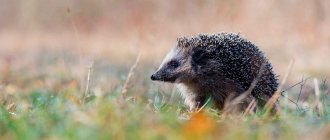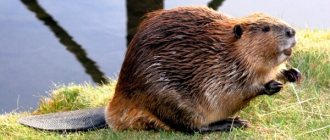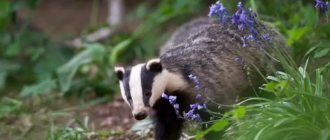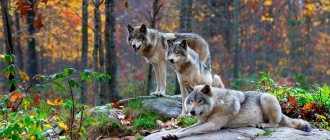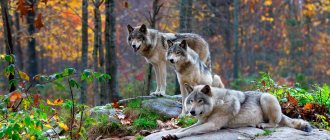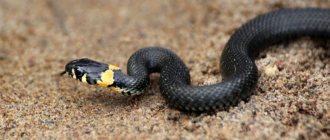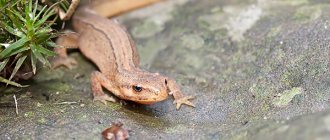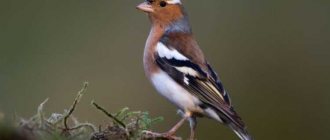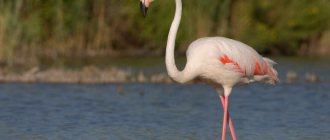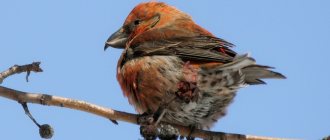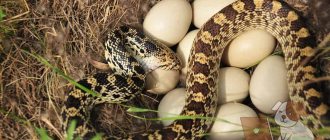23 January77481various animalsinsectivores
The common hedgehog or European hedgehog is an animal from the Hedgehog family, which is a representative of the order Insectivores. The common hedgehog has been familiar to us since childhood. The pages of children's books introduced us to this sweet and kind animal. In this article you will find a description and photo of the common hedgehog and learn a lot about this brave little guy.
How many spines does a hedgehog have?
Good afternoon, dear readers, today we will find the answer to the question of how many spines a hedgehog has.
In general, people have many stereotypes associated with hedgehogs, imposed on us by stories, children's books, fairy tales and cartoons. In many stories, hedgehogs are presented as kind animals carrying mushrooms, cones, apples, etc. on their needles.
But this is a huge misconception, even though hedgehogs eat apples, carrots, etc. Basically, by nature, hedgehogs are predators and their diet includes mice, lizards, bird eggs, etc.
A distinctive feature of hedgehogs is their defense mechanism against enemies, these are their spines on their backs. Hedgehogs have a soft belly, but in case of danger, hedgehogs curl up into a ball, thereby surrounding their entire body with spiny armor.
Let's return to our question, how many needles do hedgehogs have?
Young hedgehogs have approximately 1500 needles, the length of the needles is no more than 1.5-2 centimeters.
According to scientists, adult hedgehogs have about 3,000 spines up to 3.5 centimeters long.
Each needle is hollow inside and inside each needle there is air that supports the needle in a vertical position.
I hope we have given you an accurate answer to the question How many spines do hedgehogs have on their backs and sides?
How do they reproduce?
Naturally, for the birth of a newborn hedgehog, its parents must complete all the mating rituals. Such animals begin to think about procreation immediately after the long-awaited awakening from winter hibernation with the warmth of spring. It’s hard to imagine, but during such periods the males of such harmless creatures behave unrestrainedly and aggressively: they push with needles, bite their opponents on the face and legs. And during pugnacious showdowns, they snort and sniff loudly.
After mating occurs soon, the hedgehogs are puzzled by the search for a suitable shelter for the intended offspring. Such a refuge most often becomes a hole abandoned by one of the rodents or dug by the animal itself. Dry last year's leaves and grass are used to create coziness in this abode. The cubs are born in this hole. As a rule, a hedgehog is capable of only one litter per year, sometimes producing two.
Characteristics of the common hedgehog
The body of the hedgehog is spherical, 130-270 mm long, without division into the head, neck and torso noticeable from the outside. The body ends with a tail no more than 3 cm.
A hedgehog weighs on average 700-800 g, but before hibernation it can eat up to 1200 g. Males are larger than females. The muzzle is elongated, mobile; The nose is sharp, and in a healthy hedgehog it is moist.
On the middle part of the hedgehog's head there is a strip of bare skin, devoid of hair and spines. There are 20 small sharp teeth on the upper jaw, and 16 on the lower jaw.
The upper incisors are set wide apart, leaving room for the lower incisors to bite. The eyes are black and round. The ears are short (less than 3.5 cm), rounded, almost hidden in the fur (Reeve N., 1994).
The hedgehog's limbs are five-fingered with sharp claws: fingers 2, 3, 4 are the same length, have long claws, and fingers 1 and 5 are shorter and have smaller claws, which is why prints do not always remain from them. The tracks are round, broad-footed, about 2 cm in diameter, the step length is only 5-12 cm.
Often between the marks there are stripes left from claws scratching on the ground. The hind limbs are slightly longer than the front ones, but the same width as them (Corbet GB., 1991).
The head, back and sides of the hedgehog are covered with spines up to 3 cm long.
An adult hedgehog has from 5 thousand to 6 thousand needles, and a young hedgehog has about 3 thousand. The needles themselves are hollow, filled with air and divided into compartments by transverse disks. Each ends in a small extension that is located under the skin; therefore, the needles fall out along with flaps of skin. On the outside, all hedgehog spines are smooth, without grooves or serrations; like normal hair, it grows from a follicle.
A muscle fiber is attached to each needle, which raises and lowers it; raised needles intersect at different angles, creating a reliable, prickly cover. Under the skin of the hedgehog's back there is a special layer of ring muscle, which, when contracted, allows it to curl into a spiny ball.
Each needle grows for 12-18 months; Hedgehogs shed slowly - on average, one out of three needles changes per year (mainly in spring and autumn).
The color of the fur on the face, legs and belly ranges from yellowish-white to dark brown.
The needles are brownish, with dark transverse stripes. The chest and throat of the hedgehog are uniform in color, without white spots. In southern Spain, the common hedgehog is very pale in color (Pat Morris., 1994).
Birth
The hedgehog bears its cubs for 49 days. Finally, the very day comes when the offspring should make the caring mother happy with their appearance.
How many hedgehogs are born at a time? The litter usually ranges from three to eight cubs, the size of which is approximately 7 cm. They appear to the world naked and helpless, and also blind. Their eyelids are closed, but not only they are closed, but also their ears. The baby's weight is only about 12 g.
A newborn hedgehog is completely different from an adult representative of its tribe. The baby impresses with its unprotected bright pink skin. But, despite the absence of full-fledged organs of vision and hearing, the cub is already able to squeak and crawl. He simply needs these two skills. The first is so that his own mother can find him by the sound of his voice. And the second is for independent travel to the parental mammary gland. An interesting feature of this creature is the presence of a subcutaneous bladder filled with liquid.
Hedgehog habitat and systematic position
The distribution area of the common hedgehog covers the territory of Western Europe, Ireland, Britain, as well as on the islands off the coast of Italy.
Rarely found beyond 60° north latitude. In Russia it is found in the middle zone of the European part, in the Middle Urals and in the south of Western Siberia in floodplain and deciduous forests, parks, glades and forest edges.
At the end of the 19th century. was acclimatized in New Zealand, where it is now numerous. Judging by the fossil remains, it was previously found in North America (Corbet G B., 1991).
The common hedgehog Erinaceus europaeus is found in areas with forest-meadow and steppe vegetation.
It enters taiga and semi-desert zones only along the valleys of large rivers and their large tributaries. Avoids continuous forests and extensive swamps, especially often found on the edges, copses, forest belts, small clearings, in floodplains of rivers, and is also found in forested areas within cities and on the outskirts of settlements (Kampe, G., 2000).
Systematic position of the common hedgehog:
Superclass: Quadrupeds - Tetrapoda
Class: Mammals - Mammalia
Order: Insectivores - Insectivora
Family: Hedgehogs - Erinaceidae
Genus: Forest hedgehogs - Erinaceus
Species: Common or European hedgehog - Erinaceus Europaeus (https://ru.wikipedia.org).
When kids grow up
At two weeks of age, the amount of milk at one time for babies increases during feeding to 5 milliliters. During this period, their skin darkens and grayish fluff appears on their muzzle. A hedgehog at 1 month is covered with brown fur, its spines are fully formed and teeth grow.
Older children should be moved to a spacious box suitable for them so that they can move freely in their new house. A saucer of milk should be placed in this habitat so that these cute creatures begin to feed on their own. Soon they can be given boiled eggs and special canned food, not forgetting drinking water. Next, you should gradually accustom your children to adult food.
Hedgehog feeding behavior
The hedgehog's food consists of almost all small animals: insects and their larvae, slugs, earthworms, frogs, and also eats chicks and small birds.
Plant foods such as berries and acorns play a secondary role. A characteristic feature of these animals is the ability to concentrate in places where there is an abundance of food. In summer, hedgehogs are mainly concentrated near water sources, in the floodplains of rivers and small rivers, as well as in areas of pastures and meadows with rich grass, since there is an abundance of insects, worms and other invertebrates that form the basis of their food supply this season.
The hedgehog willingly eats carrion, as a result of which, when studying the contents of hedgehogs’ stomachs, one can find bird feathers, remains of fish or adult rodents (Brown RW., 1996).
Hedgehogs are active at dusk and at night. During the day, this animal usually sleeps in a shelter and can be seen at this time only in exceptional cases. The hedgehog goes out in search of food after sunset and returns to its shelter at dawn. Hedgehogs have a range of movement that varies depending on the type of habitat and the amount of food and the sex of the individual.
For males, the distance of movement per night reaches up to 900 meters, for females up to 600 meters within the forest zone, while in suburban and open meadow zones it is 1.5 km and 1 km, respectively. With a lack of food, the range of night movements increases, and this also happens during the breeding season.
In places with rich food resources, travel distances decrease. The movement speed ranges from 7 to 2-4 m/min. When hunting, hedgehogs do not use regularly paved trails, but are able to return to the same nest that they used previously, this suggests that hedgehogs are able to remember the location of their nests.
The common hedgehog has developed hearing and is sensitive to smells. The hedgehog senses strongly-smelling prey at a distance of up to 8-10 meters downwind, without any particular smell - no more than 4, in the soil - to a depth of 3-4 cm (Macdonald D., 2001).
Interesting facts about the animal
In ancient times, the Romans used hedgehog skins as a device for combing sheep. And the Serbs used animal urine as a remedy for alcoholism. The animal's heart was considered an amulet that protected against many diseases.
Individuals of this species are resistant to various toxins. The mammal can eat smelly bugs and insects that contain poison. The bites of snakes and some vipers do not kill this animal.
Hedgehogs appeared on earth about 15 years ago; they have 36 teeth, which, like humans, tend to fall out in old age. The life expectancy of a mammal is from 4 to 7 years.
In the summer, adult individuals must gain more than 500 grams of fat; if they do not do this, they will starve to death during hibernation. In epidemiology there is the concept of “hourly”. It indicates the number of ticks collected by a hedgehog in one hour when it runs through the forest. Scientists use this indication to identify foci of tick-borne encephalitis.
Hedgehog life cycle and sexual behavior
The lifespan of an ordinary hedgehog reaches up to 3-5 years.
Life activity differs sharply according to the seasons of the year. With the onset of cold weather, they plunge into a long hibernation; the rest of the life of hedgehogs is characterized as an active period.
The active period of life for hedgehogs takes, depending on climatic conditions, from four to seven months. In ordinary hedgehogs, it lasts the longest in individuals living in the northern regions of their range.
The entire active period can be divided into three stages: awakening, reproductive period and preparation for hibernation (David W., 1994).
The hedgehog does not store food reserves for the period of hibernation, so it has to accumulate fat during the warm period of the year in order to be prepared for the prolonged fasting that accompanies winter sleep.
Fat, which is deposited under the skin and in internal organs, is used during hibernation and during awakening for thermoregulation of the body. Preparation for hibernation is also characterized by the search and improvement of winter shelters, as well as the completion of molting - the change from summer to winter hair.
Hedgehogs build nests that vary depending on the time of year. Three types of nests: summer nests, used during the day during the warm period, brood nests, used in the spring for the birth of offspring, winter nests, used during hibernation.
Nests can be located in foliage, under tree roots, in bushes, in hay and straw stacks, in rock breaks, holes, caves, abandoned rodent burrows are often used (Corbet GB., 1991).
Summer and winter nests are very compact, approximately 50 cm in diameter, nests for breeding offspring are larger.
The inside of the nest is lined with a dense layer of leaves and grass. Construction takes from 3 to 5 days. The materials used to build nests vary depending on the habitat; these can be leaves, pine needles, or dry stems.
Having a suitable site and materials for nest construction is a key factor influencing survival during the winter and during birth. Females, unlike males, use fewer burrows during their lives. Also, the burrows of males are scattered over long distances throughout the territory, while the burrows of females are closer to each other (Naumova S.P., 1993).
By winter, food becomes scarce, the amount of energy spent searching for it begins to exceed the energy taken from feeding, and hedgehogs hibernate. Hibernation may begin during the fall if the weather is cold enough. In addition to the lack of basic food, the cause of hibernation is poor thermoregulation in the animal.
Hedgehogs are characterized by true long-term, deep hibernation, which is characterized by a decrease in metabolic processes, leading to a decrease in body temperature, a decrease in oxygen consumption, and a weak heartbeat.
During sleep, the body temperature is equal to the air temperature in the nest, so insulation of the shelter is important. The hedgehog's body temperature drops sharply from 33.7° to 1.8°C; the optimal temperature during hibernation is considered to be 4°C.
The number of heartbeats per minute drops sharply to a minimum. A decrease in metabolic activity and body temperature means that the energy requirement during hibernation will be significantly less, so the hedgehog's fat reserves will help it survive. In a state of hibernation, a hedgehog can live up to 240 days, while during the waking period it cannot tolerate fasting even for 10 days. During winter sleep, weight is lost almost daily, so that over the entire period of hibernation, the weight of the animal is sometimes reduced by half.
The pose of a sleeping hedgehog is very characteristic - the animal curls up into a ball, so that the nose and paws are pressed to the abdomen, and the tail is pressed against the head. This position reduces heat transfer from bare or sparsely haired areas of the body and reduces the surface of its contact with air.
During hibernation, hedgehogs remain sensitive to their environment. If there is disturbance in or near the nest, the hedgehog bristles with needles and his heartbeat quickens.
Hedgehogs lead a solitary lifestyle with the exception of the mating period, therefore, as a rule, one hedgehog spends the winter in each nest (Corbet GB., 1991).
The duration of hibernation is determined from the period when hedgehogs cease to appear on the surface and come into view, but this is preceded by a series of temporary torpor followed by wakefulness.
Gradually, the duration of sleep increases until torpor turns into deep hibernation. The duration of the hibernation period depends on the nature of the local climate, individual environmental conditions and the sex of the hedgehog. Males hibernate and awaken earlier than females. With warm temperatures and an adequate food supply, hedgehogs may not hibernate (Pat Morris., 1994).
Awakening from hibernation is caused not only by an increase in environmental temperature, but also by disturbance caused by other individuals.
Spring awakening serves as a signal for the beginning of reproduction.
For the common hedgehog, the breeding season starts from March or April until August or September.
At high latitudes, reproduction begins later and ends earlier. Hedgehogs are polygamous. During the mating season, fights occur between males over females: they attack and bite each other, using their quills in the fights.
After the fight, the winner circles around the female for hours, winning her over. After mating, the male and female separate. The female builds a brood nest, near which she remains for the entire gestation period. Pregnancy lasts about 4 weeks. Sometimes pregnancy lasts up to 45-49 days, this is due to unfavorable environmental conditions, which cause an earlier fall into short-term torpor.
The female brings one litter per year, in which there are three to seven cubs, but if the first mating occurred early enough, there may be a second.
Cubs are born head first or tail first. The mother licks the membranes off them and places the newborns under her belly.
Hedgehogs are born naked, without needles or fur, bright pink in color, with closed ears and eyes. The weight of a newborn is about 20 grams, about 70 mm. The first white needles appear on the first day. Black segmental needles, 100-150 pieces, appear 36-48 hours after birth; at 6 weeks they are replaced by the first needles of adults.
During the first month, hedgehogs are not yet able to completely curl up into a ball. For 2 weeks after birth, hedgehogs have poor thermoregulation; the hedgehog warms them with her warmth. Eyes open on days 14-16, teeth begin to appear on day 20 of life. Hedgehogs are able to eat their first solid food after 25-30 days.
Approximately 45 days after birth, the mother leaves the cubs, by which time their body weight increases 6 times. Puberty occurs a year after birth (Reeve N., 1994).
Hedgehog in the red book
Recently, this species of animal has sharply reduced its numbers in its usual habitats. And in connection with this, he needed a protective status; now he is listed in the Red Book of the Russian Federation.
Main causes of extinction
In the second half of the twentieth century, it became noticeable that the number of common mammals had sharply decreased. The reasons for this were:
- reclamation activities in animal habitats;
- spraying pesticides;
- highway construction;
- seasonal fires.
The large catch of spiny animals also affected the disappearance of the hedgehog population.
Current population situation
The hedgehog population can fluctuate from year to year, due to the dependence of weather conditions and food supply. Also an important factor is suitable places for raising the second litter.
Studies show that the number of individuals is constantly decreasing by several percent per year. The current population in exact numbers is unknown, due to the difficulty of observing nocturnal animals.
Are protective measures required?
To preserve and increase the number of mammals, the following measures are taken:
- fire safety standards are observed;
- special places are allocated for grazing cattle;
- nature reserves are being created;
- Economic activity in areas where this animal species is distributed is decreasing.
Educational work is also carried out with the population, which helps restore the population. In this regard, people began to take wounded wild hedgehogs to the zoo so that they could be taken care of there.
The structure of hedgehogs
Hedgehogs belong to the order of insectivores.
A characteristic feature of hedgehogs is the presence of an unusual outer covering, consisting of sharp, long and horny needles.
The front part or muzzle of representatives of the hedgehog family has an elongated structure, similar to a small proboscis. Hedgehogs also have sharp teeth designed for feeding on animal food.
Hedgehogs have short limbs, but have long, powerful claws, thanks to which the hedgehog gets its food.
First days of life
Newborn hedgehogs at home can be fed from the age of three days with goat's milk or artificial milk substitutes. But this is a painstaking task that requires a lot of attention and caution. Feeding is carried out using a pipette. A person who has voluntarily taken on the role of guardian of such creatures must constantly ensure that milk does not accidentally get into the babies’ lungs and nose. This sometimes becomes deadly. It is better to arrange eating sessions for newborn hedgehogs every three hours, but strictly during the daytime. Intervals may be longer, but in any case no more than six-hour breaks are acceptable.
Lifestyle and nutrition
As a rule, hedgehogs go out hunting in the late afternoon, as they are nocturnal. The main food of hedgehogs are various kinds of small insects (ants, chafers, green grasshoppers), which they pick up by digging in fallen leaves.
Hedgehogs also feed on mice, anurans, toads, some species of snakes and other small vertebrates.
When danger is detected, hedgehogs instantly curl up into a ball; such curling occurs due to special muscles, while the head and limbs are under the horny, needle-like cover.
In the winter season, hedgehogs hibernate, having built themselves a small lair from dry leaves.
During hibernation, all the life processes of a hedgehog slow down, especially body temperature, which drops to almost 2 degrees.
The duration of hibernation depends on the “severity” of winter. And with the onset of the first warm spring days, hedgehogs come out of hibernation.
The hedgehog family includes 23 species of hedgehogs, the most common of which are:
- common or European hedgehog - lat. erinaceus europaeus;
- eared hedgehog - lat. hemiechinus auritus.
Human interaction
It is impossible to say unequivocally that a hedgehog only brings benefits to humans, since it is a carrier of harmful diseases such as yellow fever, tick-borne encephalitis, rabies, salmonellosis, tularemia and others. This is all due to the fact that small animals contain fleas and ticks.
But, on the other hand, it also brings benefits to humans by eating harmful pests in summer cottages - chafer beetles, monk caterpillars, and weevils. Therefore, about this type of animal, we can say that its presence is half useful.
Many peoples have appreciated the taste of hedgehog meat. For example, in England, hedgehog stew is still prized, and gypsies love hedgehog meat baked over a fire.
